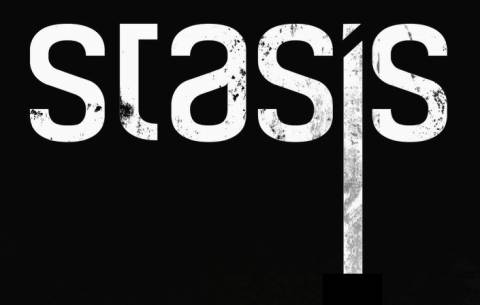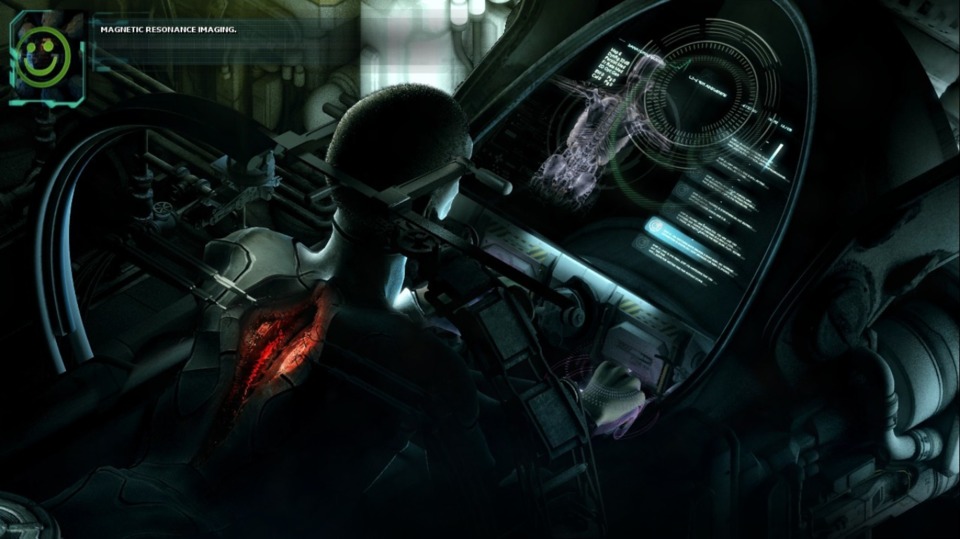Indie Game of the Week 154: Stasis
By Mento 0 Comments

Space inspires an equal amount of wonder and terror alike, as an endless inky void that permeates and surrounds us all in every direction, and so there's no shortage of sci-fi space-faring horror fiction out there. However, I'd argue that The Brotherhood's Stasis is less about the abyss of space but the abyss of the human soul, given several generations to let the march of technology bring us to a science-gone-awry scenario several magnitudes worse than what we've already seen. The repercussions of this mad science is the nightmare scenario that migrant John Maracheck awakes to, after his stasis pod unexpectedly ejects him into the bowels of the Cayne Corporation's medical research vessel The Groomlake. All that surrounds him are ominous echoes and human viscera; John's immediate questions are "where is the crew?" and "what happened to them?" and "where is the nearest escape pod?". That is, after he becomes determined to find out where his wife and daughter have gone, who were back on the transport ship with him.
The game has the immediate rhythm of something like Visceral's Dead Space, where your only companionship besides the terrors that lurk just beyond your sight is a systems operator you communicate with remotely (whom provides the necessary direction), and you make your way through various ship decks that operate as discrete "levels" of the game. You can't backtrack to earlier areas, and this helps reduce the number of variables in the adventure game puzzles that the gameplay is built around. After all, Stasis isn't so much survival horror - there are certainly ways to die, but these deaths happen in pre-determined locations and require solving puzzles to surpass - as it is a traditional point-and-click adventure game that uses a fixed, axonometric, third-person perspective with pre-rendered backgrounds that recalls the classic Infinity Engine era of RPGs. This also allows the game to create highly detailed (and highly disturbing) environments without causing any problems for weaker PC systems.
While I liked Stasis's grim and gruesome storytelling and world-building, there's no denying it has quite a few bugbears beyond those actively trying to eat you. The first and most apparent is the quality of the voice-acting: the game was created in South Africa, where English is the lingua franca but far from the most widely spoken language. Some actors have an Afrikaans-accented English that is perfectly understandable, but others seem to struggle with the right intonations and phonemes, which is especially evident early on where John has a flashback of him and his wife singing his daughter to sleep before all three enter stasis. This might also be the case of voice actors unused to the medium more than it is due to regional differences, but either way the poor VA can be distracting for such a narrative-driven game. At least the voice actor for the protagonist - who spends almost the whole game alone commenting to himself - does fine. Another issue is connected to the puzzles: while the game does keep things relatively compact with how it separates itself into these discrete chapters/decks, there are an awful lot of what I generally consider "moon logic" puzzles. Puzzles that have a solution which isn't immediately apparent because they're completely insane in terms of being able to suss them out intuitively, if not perhaps in the context of a scared and desperate man jerry-rigging or brute-forcing a means forward.
A strong example of this would be when you need to do extremely painful surgery on yourself (another Dead Space riff) and must set up the operation by collecting some resources: pressurized oxygen, cryostasis fluid, human organic material, and anaesthesia. The anaesthetic is a freebie but obtaining the other three requires solving the following puzzles: with the oxygen you have to find an oxygen tank in the EVA suits in the adjacent room but for whatever reason the tank alone isn't compatible with the collector next to the operating table - instead, you have to wrap a loose cable around it that you get a bit earlier in the chapter to make it fit (???); the cryostasis fluid you collect by solving a game of Mastermind (which is partly trial and error) with the nearby stasis pod room, accidentally killing a stasis pod occupant, and mopping up the loose fluid that flows out along with them, despite being pre-used and currently spilled across a filthy floor (?????); and then for the organic material you need to collect a clump of viscera from a nearby bloodbath, but the machine won't accept it because it's not "refined" - in order to refine it, you have to stick it on a convenient surface and then hit it with an empty revolver until it's less lumpy before the machine is OK with it (???????). These puzzles continue to increase in obtuseness as the game progresses, possibly as some warped idea of a difficulty curve in perhaps the single genre that doesn't benefit from having one.

Despite these major problems, Stasis does get right what it perhaps feels is the most important aspects: a constant state of tension and dread as you bumble your way through one near-death scenario to the next, keeping its monsters just out of sight or with brief jumpscare flashes before you find out what they actually are, and the discovery of the depths of depravity that the senior staff of this medical research vessel has sunk to in the name of science hits like a sledgehammer. There is some very messed up imagery in this game even before you get to the "birthing pool" laboratories, and the developers clearly have fun revelling in the setting's grotesqueries. That The Groomlake is situated in a decaying orbit above Neptune - presently about to engulf the ship in a powerful atmospheric storm - only lends itself to the Gothic foreboding of the ship's dark and imposing architecture. My favorite aspect, as it usually is with this genre of game, is reading the journal PDAs of the doomed crewmembers and getting the gist of what happened by piecing it together from the multiple perspectives involved. For as much as I wanted to kick the game's puzzle designer out of an airlock towards the end, I can't help but commend the game for the way it develops its atmosphere, and for its grisly visual and narrative choices.
Rating: 3 out of 5.
| < Back to 153: Avadon 2: The Corruption | The First 100 | > Forward to 155: Vaporum |
